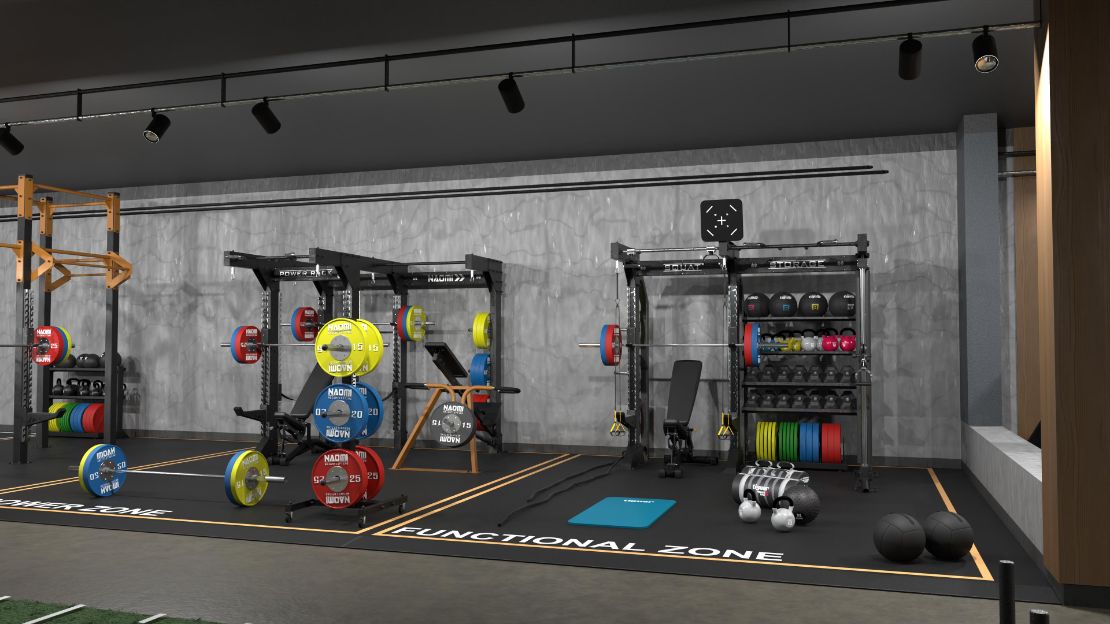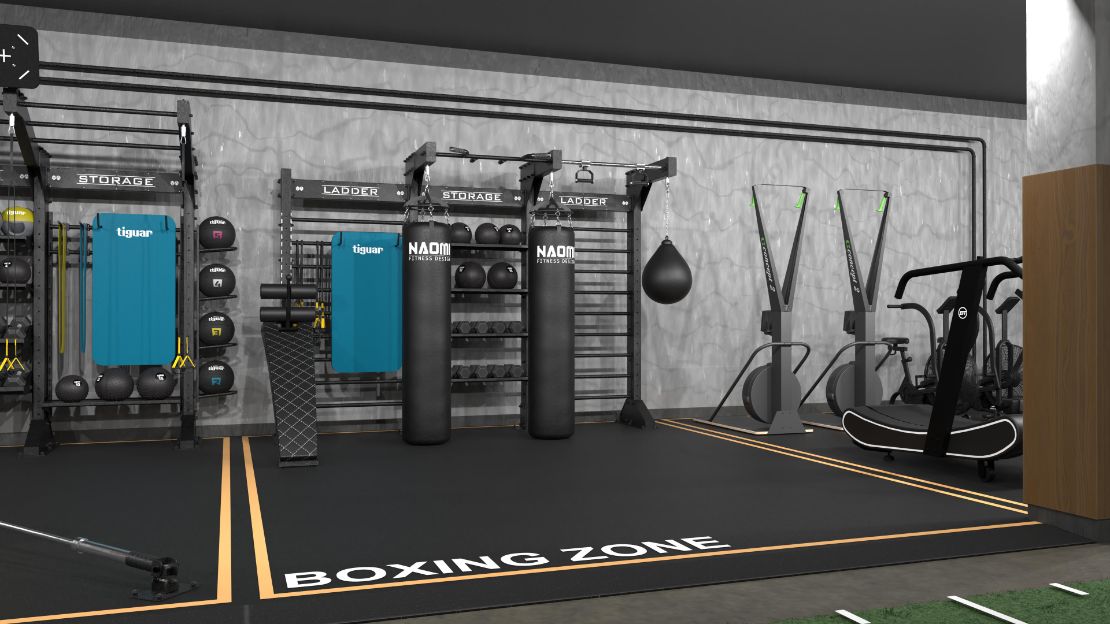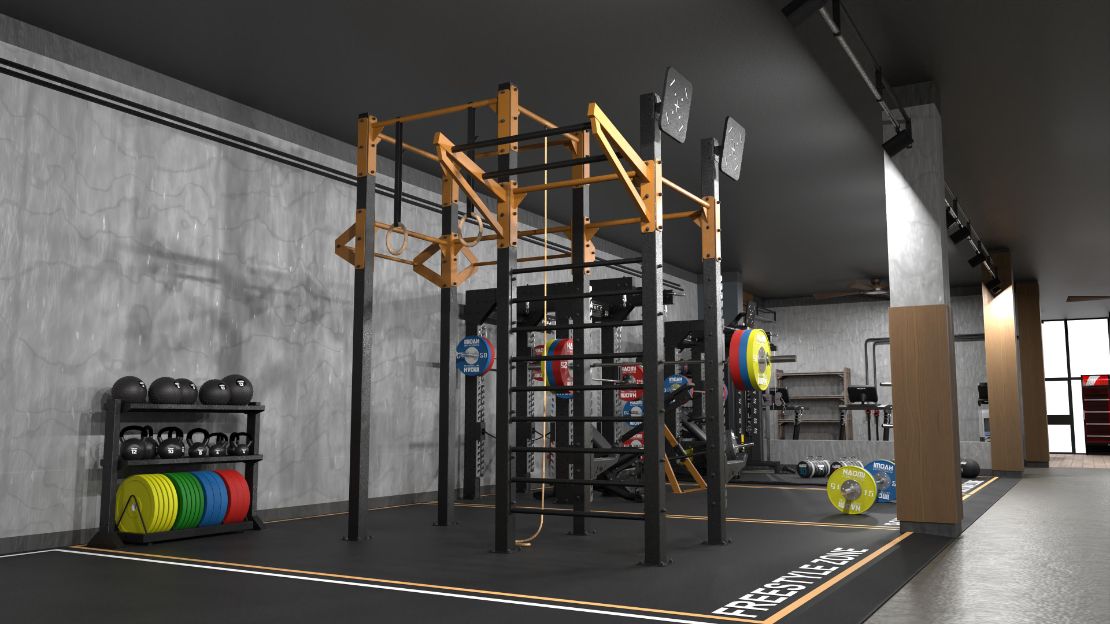BLOG POST
HOW TO CHOOSE THE RIGHT TRAINING CAGE FOR YOUR GYM OR FUNCTIONAL TRAINING STUDIO

Choosing a training cage for your gym is like casting the lead actor in a movie. It must fit perfectly with the rest of the equipment, look great, and, most importantly, serve its purpose. Just like you wouldn’t cast George Clooney in a Dwayne Johnson-style action movie, you need to pick a cage that fits your space, clientele, and training goals.
HERE’S A BREAKDOWN OF KEY FEATURES AND CONSIDERATIONS TO HELP YOU MAKE THE RIGHT CHOICE:
1. How Much Space Do You Have?
Before selecting a training cage, assess the available space in your gym. Think of it as setting up a stage for a movie: too many props and there won’t be enough room for the actors to perform. Make sure the cage doesn’t overcrowd your training area. Ideally, leave 1.5 to 2 meters of free space around the cage, or even 3 to 4 meters if you plan on conducting group sessions. Your clients need room to move freely—no one wants to feel like Bruce Willis stuck in a narrow air duct from Die Hard.
2. Who Is Your Target Audience?
Are you setting up the space for personal training, group sessions, or individual workouts? The cage you choose should match the needs of your target audience, similar to how a director chooses a film's genre based on its audience—whether it's a kids' movie or a horror flick. Large cages with multiple stations work best for group training, but if you’re focusing on one-on-one personal training (PT), a simpler solution might be more suitable.
3. What Stations Do You Need?
Consider how many and what types of stations you want in your cage. Do you need more squat stations, or perhaps a cable stack station to resemble a scene from Rambo? Just like casting the right actors for a specific role, you don’t need every station for every client. Choose modular options that allow for customization based on your target audience's needs. This way, you can have flexibility without forcing your clients to adapt to equipment that doesn’t fit their training goals.
4. How Many People Will Be Using It?
Think about how many people will use the cage simultaneously. It’s like deciding the number of extras in a fight scene. Will it be one person at a time, or are you planning for group sessions? For group workouts, you'll need more space around the cage so clients don’t feel packed in like sardines. Make sure there’s enough room for everyone to work out comfortably.
5. Check the Ceiling Load Capacity
If your gym is located on an upper floor, you’ll need to ensure the ceiling can support the cage’s weight. Otherwise, your downstairs neighbors might get an unexpected cameo when your heavy cage comes crashing through the floor! This is especially crucial for stations like squat stations or cable stacks, which can weigh as much as 400 kilograms. Consider the additional weight of any rubber flooring or accessories as well.
6. Don’t Forget the Flooring
Rubber flooring is essential to protect your space, much like a red carpet at a Hollywood premiere. It doesn’t just look good; it also cushions and supports the weight of heavy equipment and movements. Make sure your floor can handle the combined weight of the cage and other accessories without damaging the structure beneath.

COMPARISON OF DIFFERENT CAGE MODELS
- Minimalist Cage (for PT): Think of this as casting Matt Damon in a film—simple, effective, and doesn’t overpower the scene. It’s ideal for personal training with just a couple of stations (like squat and cable stack), requiring a modest 16-20 square meters of space.
- Multifunctional Cage with Numerous Stations: Enter The Rock. This cage is solid, versatile, and ready for anything. It’s perfect for group training sessions with multiple stations, where everyone can see each other and stay motivated. This cage works best as a central feature of your space.
- Modular Cage: Flexible like Tom Hanks, this cage adapts to your needs and allows you to change configurations as needed. It’s ideal for gyms where user requirements change frequently. Whether wall-mounted or freestanding, this cage can be tailored to your available space and client needs.

CONCLUSION
Choosing the right training cage is like casting the perfect star for a movie role—it needs to look the part and stand the test of time. Remember to consider your space, audience, and the technical details like load capacity. Just as an actor needs to deliver in every scene, your cage must support your clients' needs for years to come!